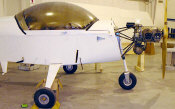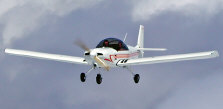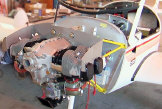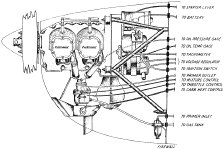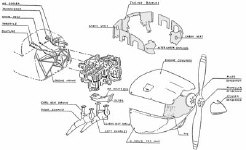
 |
 |
 |
 |
 |
 |
NEW
ZODIAC CH 650
Cabin
Dual
Sticks
Upholstery
Kit
Engines:
ULPower
Jabiru
3300
Rotax
Cont.
O-200
Corvair
Lycoming
Others
| Photo Galleries |
| Zodiac
Home Design Kit Construction |
![]()

Teledyne Continental Motors O-200 (100-hp) Aircraft Engine
![]() Continental
has been producing aircraft engines for since the 1930s. The company
originally built the A40 engine, a 38-hp 4 cylinder horizontally-opposed
air-cooled engine used in the Piper Cub. The original engine evolved into
various models over the years, including the A65, A75, C75, C85 and C90,
and finally evolved into the O-200 engine used in the popular Cessna
150. Over the years, thousands of small Continentals have been
produced (Continental was producing more than 10,000 engines per year
in the late seventies). Today, the O-200 engine is still available
factory-new from Continental, and used ones are available from many
sources.
Continental
has been producing aircraft engines for since the 1930s. The company
originally built the A40 engine, a 38-hp 4 cylinder horizontally-opposed
air-cooled engine used in the Piper Cub. The original engine evolved into
various models over the years, including the A65, A75, C75, C85 and C90,
and finally evolved into the O-200 engine used in the popular Cessna
150. Over the years, thousands of small Continentals have been
produced (Continental was producing more than 10,000 engines per year
in the late seventies). Today, the O-200 engine is still available
factory-new from Continental, and used ones are available from many
sources.
Continental engines provide a history of performance and reliability, with available worldwide parts and service support. Many Zodiac builders have installed used and/or overhauled Continental engines. There is a large market for used Continental aircraft engines, with numerous sources for used engines, parts and after-market upgrades and enhancements. If using a older Continental engine, we recommend that the engine be upgraded with a lighter (and more modern) electrical system.
| Mattituck (Teledyne Mattituck Services) is a subsidiary of Teledyne Continental Motors, the same company that manufactures Continental engines. Mattituck manufactures the 100-hp TMX-0-200-A engine assembled using all new Continental parts. The TMX (or "experimental") series engines are brand new zero time engines. The TMX engines are outright sales, no core exchange or trade in is required. The TMX-O-200 engine is not FAA certified, which is why it is sold for significantly less than a comparable FAA-certified Continental O-200 engine. All parts used on the engine, with the possible exception of some accessories, are fully FAA certified components but the engine as a complete unit is not certified. The 100-hp TMX-0-200-A engine is supplied with a 1,800 hr. TBO, and installs just like the Continental O-200 engine. |
ENGINE DETAILS: Continental 0-200
|
|
Engine Specifications |
O-200 | C75 | C85 | C90 |
| Displacement (cu.in.): | 201 | 188 | 188 | 201 |
| Bore: | 4 - 1/16" | 3 - 7/8" | 3 - 7/8" | 4 - 1/16" |
| Piston Stroke: | 3 - 7/8" | 3 - 5/8" | 3 - 5/8" | 3 - 7/8" |
| Compression: | 7 : 1 | 6.3 : 1 | 6.3 : 1 | 7 : 1 |
| Power Rating: | 100 | 75 | 85 | 90 |
| Normal Rated RPM: | 2750 | 2275 | 2575 | 2475 |
| Fuel Consumption @ 75%: | 6.3 | 4.8 | 5.4 | 5.9 |
| Fuel: | 80/87 | 80/87 | 80/87 | 80/87 |
| Oil Capacity: | 6 | 4.5 | 4.5 | 5 |

For more information about the O-200 engine:
- Click here for lightweight O-200-D engine details
- Click here for O-200 engine installation photos
- Click here for price information on firewall-forword engine packages for the ZODIAC XL.
- Click here for Teledyne Mattituck Services
-
Click here for Teledyne Continental Motors (TCM)
"Sebring
Sport Aviation Expo 2007: Oh, The Planes!" Review of the factory-built Zodiac
XL S-LSA (powered by
the O-200) by Rob Finfrock (January 19, 2007, Aero-News
Network):
|
NOTE: All above information is subject to change and revision without prior notice.
The above resources are provided for informational purposes only - Zenith Aircraft Company does not manufacture or directly support engines installed in the ZODIAC kit aircraft.

Zenith.Aero: Online community for active Zenith builders, owners and pilots Zenith Aircraft
Company |
© Zenith Aircraft Company: 2014-03-03

